You’ve Launched Amazon Ads, Now What? How to Correctly Adjust Your Bids
For sellers just starting on Amazon, Amazon Advertising is an excellent way to drive traffic and quickly gain product exposure.
However, as the promotion costs of Amazon Ads continue to climb, how to reduce ad spend without compromising campaign performance remains a persistent concern for sellers. Since Amazon Ads are primarily auction-based, bids directly impact costs. Therefore, effective ad bidding is crucial. So, how do you correctly adjust your Amazon ad bids?
I. Identify Peak Traffic Times to Adjust Bids and Capture Sales
We all know that Amazon sales also experience peak and off-peak hours for order generation. Therefore, we need to identify peak time periods and increase bids during these times to capture that traffic and secure more high-quality conversions.
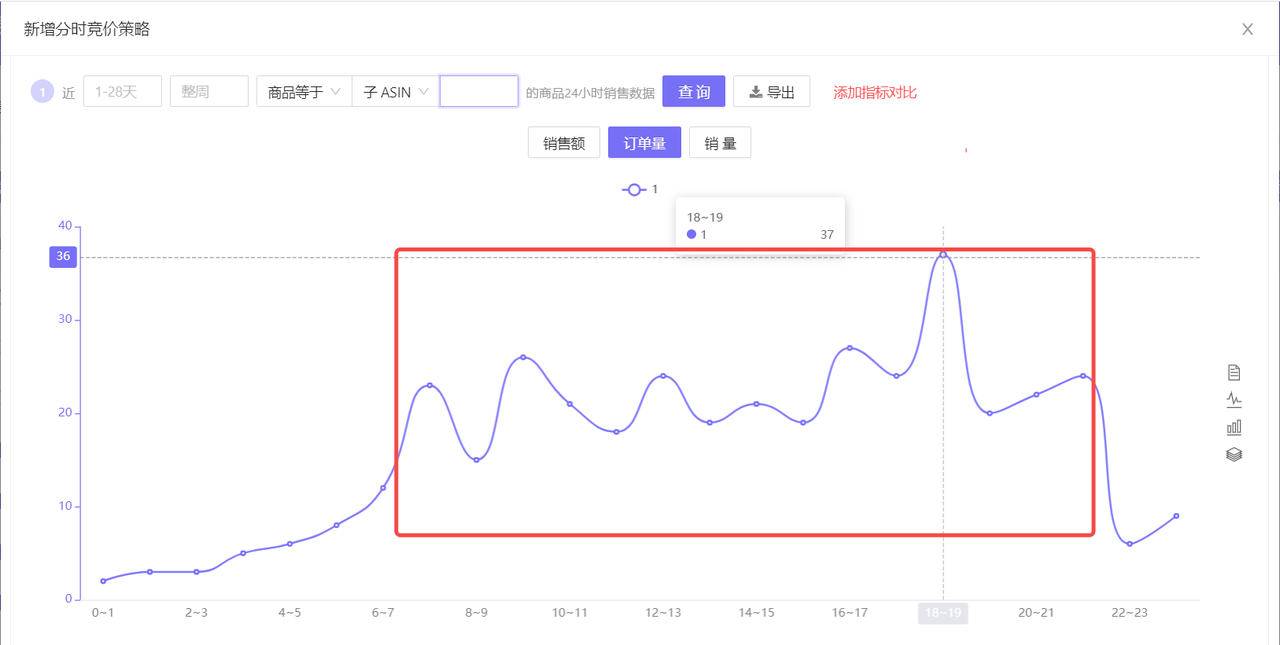 +
+
(Source: YouMailCloud -> Sales Data by Hour - Last Four Weeks)
In addition to “Sales Data by Hour - Last Four Weeks,” you can also analyze hourly incremental trends to further confirm high-frequency purchasing periods and determine the optimal times to increase bids and scale up campaigns.
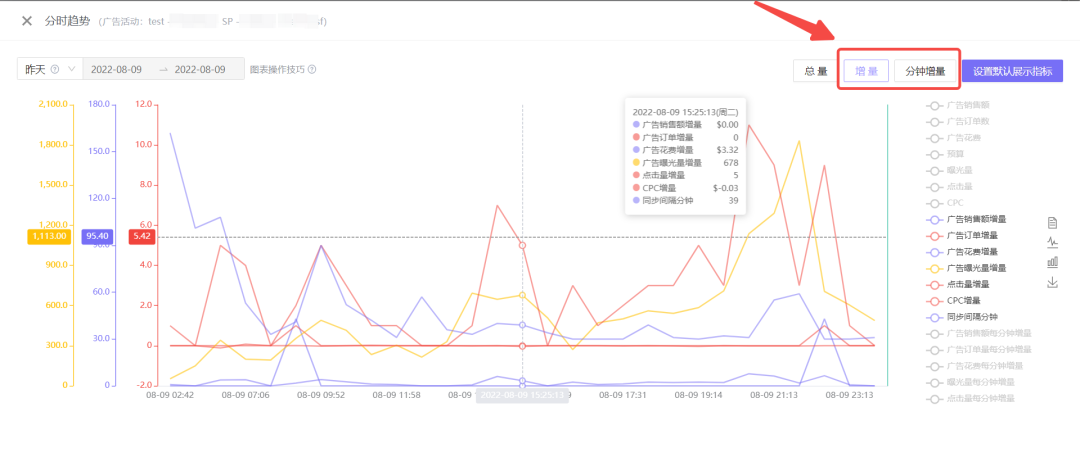
(Source: YouMailCloud -> Hourly Trend Data)
II. Different Bidding Strategies for Different Ad Placements
Of course, simply adjusting bids based on time of day is not enough, as ad positions change constantly throughout each period, also impacting bid effectiveness. Therefore, in addition to identifying peak sales hours, we also need to consider ad placements and adjust bids according to different ad positions.
So, how do we analyze ad placements and adjust bids?
First, we can look at the number of times and percentage a product ranks within the top 3 pages. For example, for the product below, it has almost exclusively appeared on the second and third pages for the past 30 days, and has rarely reached the first page. At this point, you can try to increase its bid to aim for the first page.
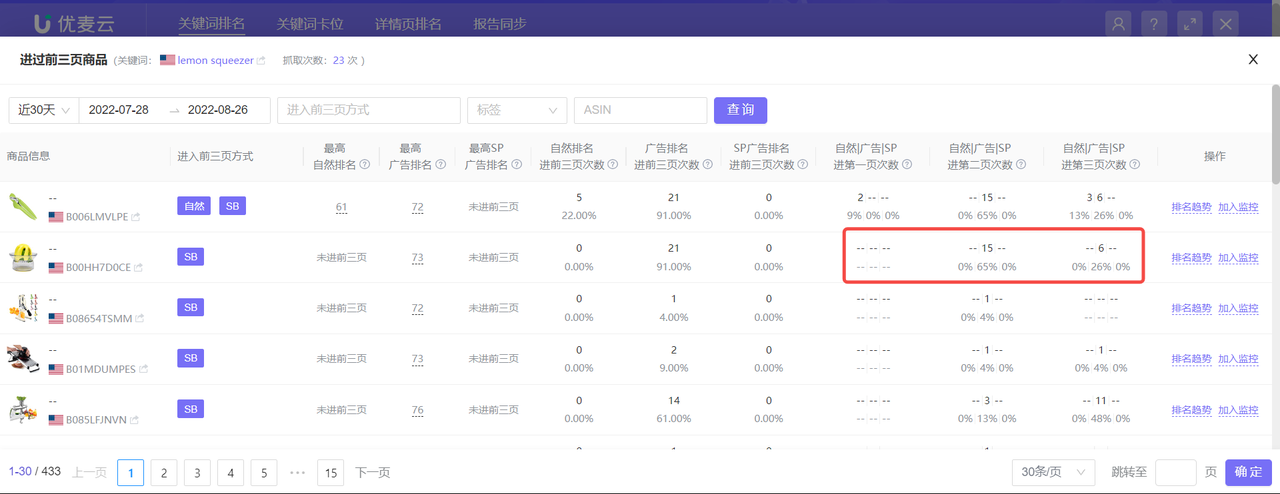
(Source: YouMailCloud -> Keyword Ranking)
Also, if the organic ranking is already on the first page, then we can appropriately reduce the bid and target ads towards the second or third page to broaden the product's exposure and acquire more traffic and conversions, as with the product below:
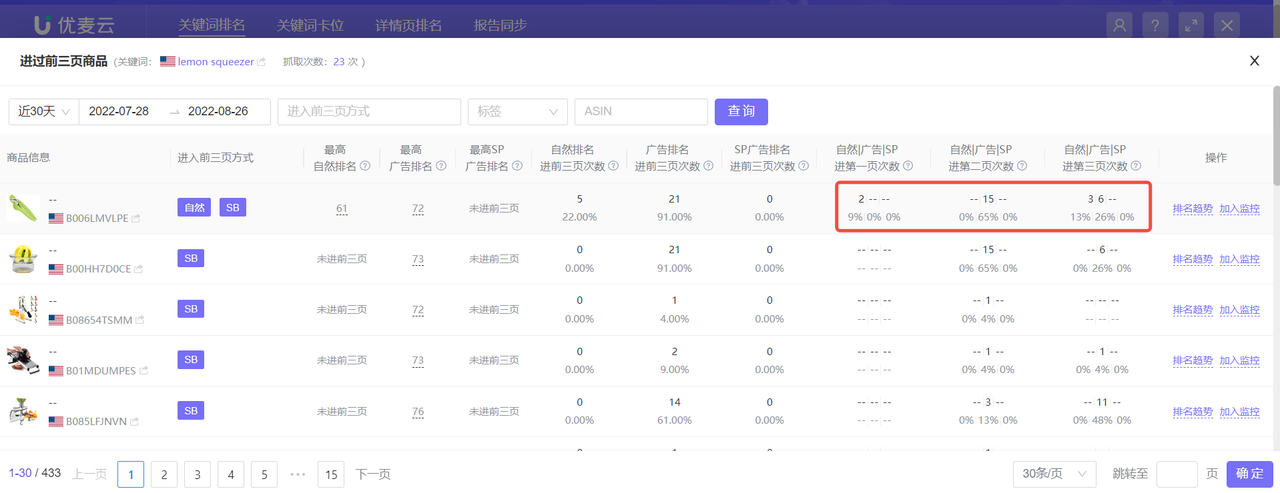
(Source: YouMailCloud -> Keyword Ranking)
Of course, if the product has not yet entered the top 3 pages, or even the top 5 pages, then the current focus should be on Listing optimization. This includes optimizing product images, keywords, sending out for reviews, etc., to improve Listing quality and ad relevance, and to help the product rank higher.
In addition to focusing on your own product's placement, it is also necessary to pay close attention to competitor placements, especially competitors that you cannot currently outperform. If our product is next to a strong competitor, then the current traffic is very likely to be taken away by the competitor, and we are merely getting exposure, which is not worth the cost.
At this time, we need to adjust bids, either increase or decrease, to avoid direct competition with competitors, or switch to more precise long-tail keywords. We can compete for traffic for that keyword after our own product competitiveness improves.
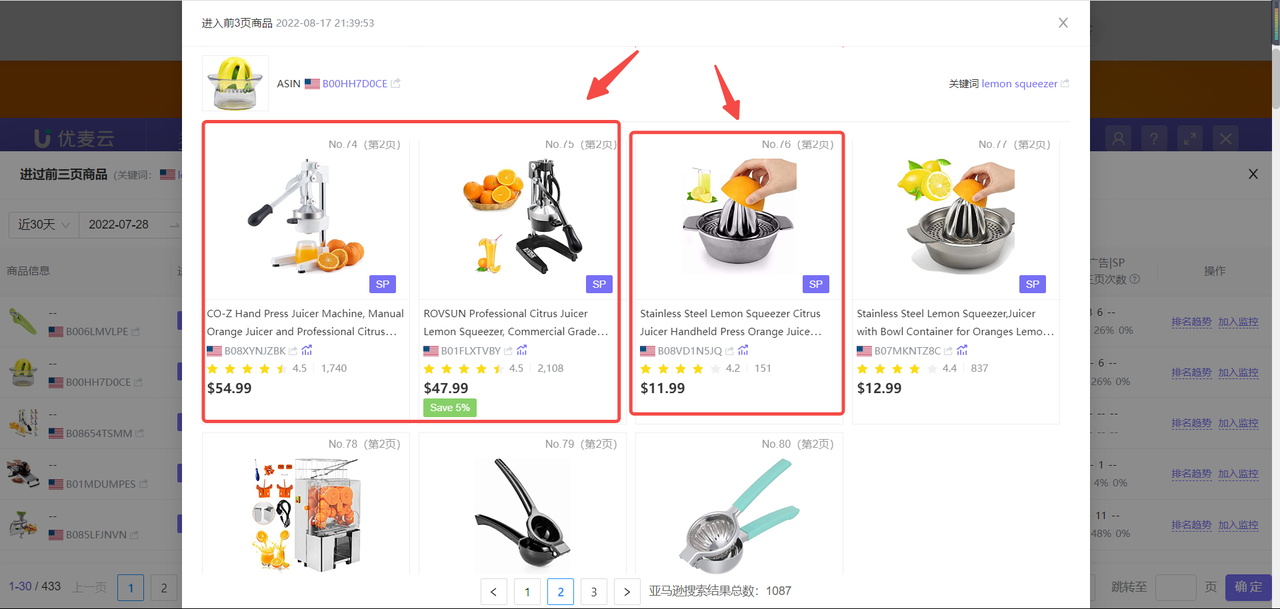
(Source: YouMailCloud -> Keyword Ranking)
III. Bids and Budget
When it comes to reducing advertising costs, “bidding” is never a standalone effort; it is closely linked to “budget.” When controlling spend, we should control clicks, not blindly reduce budget and bids.
And Budget = Cost Per Click × Clicks. Therefore, we need to observe clicks and current Listing sales, combined with our expected advertising spend percentage, to derive the maximum budget range. Adjust ad campaigns within this range to control spend.
If ads continue to exceed the budget, you can refer to this article "Why Are Amazon Ads Always Over Budget? How to Adjust?" to understand solutions for budget overruns.

SellerSpace is a concise tool to manage multiple Amazon accounts, focuses on solving various problems encountered by sellers during operating Amazon business.
Mail:support@sellerspace.com
©2018-2025 SellerSpace.COM All Rights Reserved
Online
Service
